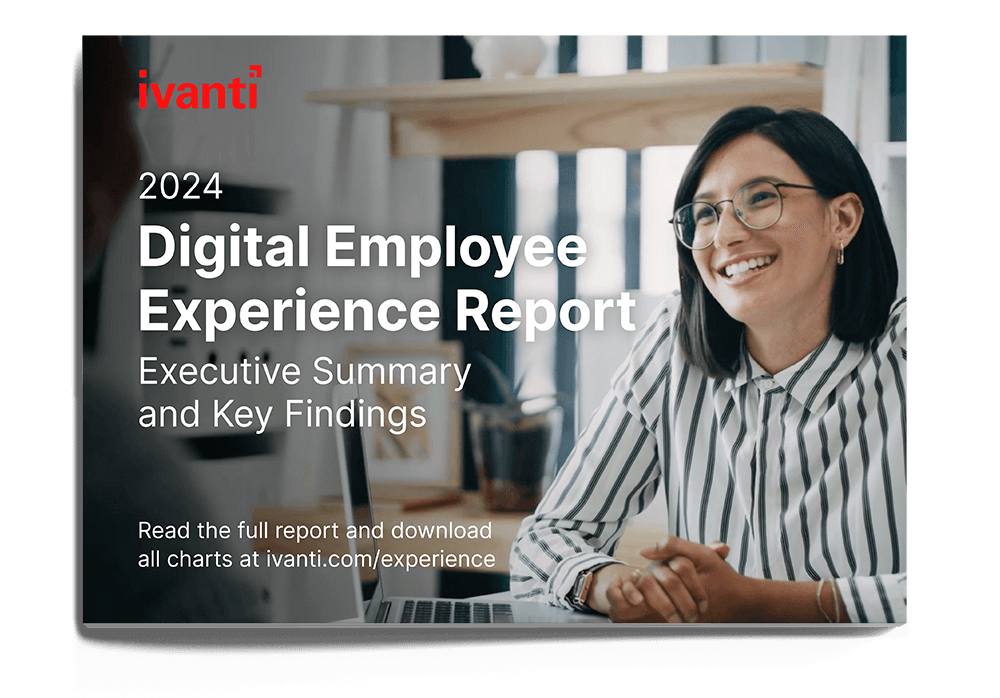5 predictions for 2025 based on the DEX research
1. IT leaders must prove the value of DEX by focusing on IT teams’ digital employee experience.
Ivanti’s research shows that organizational leaders understand DEX’s potential — 90%+ believe high-quality DEX improves employee productivity, satisfaction and retention — yet only 42% of IT professionals say their organizations’ leaders truly buy into the value of DEX.
IT leaders can prove the powerful impact of well-managed DEX, but only if IT team members are on board.
“DEX needs to start with IT because they are tasked with enabling DEX and transforming the organization,” says Jeff Abbott, CEO of Ivanti. “Currently, IT is feeling burned out by high ticket volume and all the complex demands of Everywhere Work — so when a new initiative like DEX is suggested, it can be difficult for IT professionals to see beyond their immediate sense of stress and overwhelm.”
Ensuring IT can access the tools they need to perform their job well anywhere, whether in-office or remote, needs to be a top priority for IT leaders. Currently, 23% of IT workers who work remotely at least part-time say their tools are not as effective off-site — an unacceptably high proportion, given that most prefer the flexibility of hybrid or remote work.
2. Companies will use DEX-improvement strategies to ease unresolved tensions of the Everywhere Work movement.
The majority of office workers (86%) say they’re just as productive or more productive working remotely — and most prefer to work that way. Yet the research shows executive leaders are far less convinced; they are 2.6 times more likely than office workers to say employees need to be in the office to be productive.
Investing in high-quality DEX tools and processes can be a win-win by making employees more productive working off-site and giving leaders the ability to measure and manage productivity — no matter where or when employees work.
3. Together, AI and DEX will transform IT workflows and reduce IT burnout.
AI-enabled DEX can transform internal processes and systems and remove low-value work from the IT workflow. Organizations will double down on action-oriented DEX — solving problems proactively, before they surface and create friction; for example, installing a new patch, fixing slowed performance or reacting to any other data “signal” across a vast tech ecosystem. Managed properly, AI investments will improve the quality of life of IT professionals who are currently overwhelmed by the demands of empowering Everywhere Work.
4. Savvy CIOs will use DEX to elevate their roles and gain visibility as strategists.
Nearly 3 in 4 executives say DEX can elevate the role of the CIO, making IT leaders a part of strategic business conversations within the organization.
Why? Because DEX influences major business drivers, including employee experience, retention and productivity. A staggering 97% of leadership-level executives say high-quality DEX boosts employee productivity and 90% say it positively impacts employee retention. Now, CIOs must turn ideas into action — demonstrating how investments in best-in-class technology, reimagined workflows and highly accessible data can transform business performance.
5. DEX will force IT to confront fragmented tech stacks.
Building a DEX strategy requires that organizations finally integrate what is currently a highly fragmented IT tech stack. Without integration, IT won’t be able to extract the valuable insights they need to understand how their users are interacting with technology – and how those experiences can be improved and transformed.
Daren Goeson, SVP of product management at Ivanti, explains, “A large share of organizations don't have an effective toolset to understand digital employee experience. That’s because many DEX tools require complex and costly integrations with other systems in their ITSM or device management systems. Without integrations, DEX progress can be slow — even when the organization highly prioritizes DEX initiatives.”



